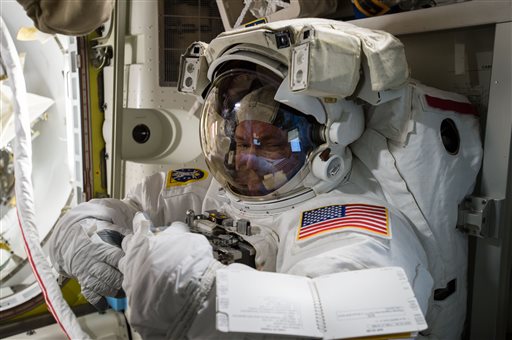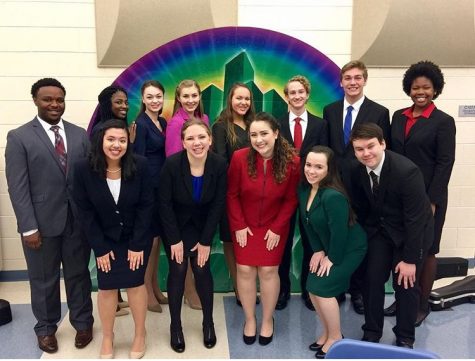NASA Now Accepting Applications from Hopeful Astronauts

In this photo provided by NASA and posted on Twitter on Oct. 26, 2015, astronaut Scott Kelly tries on his spacesuit inside the U.S. Quest airlock of the International Space Station. NASA opened its astronaut-application website Monday, Dec. 14, 2015. It’s accepting applications through Feb. 18, 2016.
“When I grow up, I want to be an astronaut!”
Many of us remember saying that at some point in our childhood. Every kid dreams of being in space, and since the release of the new Star Wars movie, some of those dreams may be resurfacing! Now, for those with a bachelor’s degree from an accredited institution in engineering, biological science, physical science, computer science, or mathematics; 20/20 vision; U.S. citizenship; 1000 piloting hours in a jet or at least 3 years of related, progressively responsible, professional experience obtained after degree completion, and between 4 feet 8.5 inches and 6 feet 4 inches tall, you can!
NASA is now accepting applications to be an astronaut. From December 14, 2015, through February 18, 2016, anyone meeting the qualifications above can apply to become an astronaut.
“NASA is on an ambitious journey to Mars and we’re looking for talented men and women from diverse backgrounds and every walk of life to help us get there,” said NASA administrator Charlie Bolden.
Currently, one of the main issues with getting to Mars is that we do not have the means to properly store enough fuel for a trip of that length. Another is landing a craft large enough for a human mission on the planet’s surface. The Curiosity rover, which landed on the surface in 2012, weighs only 1800 pounds. When it gets heavier than that, complications occur due to Mars’ thin atmosphere.
So, how can someone really become an astronaut? In 2013, only eight out of 6,000 applicants were chosen to join NASA’s astronaut program–about .0013%. With chances like those, most people don’t believe they can actually become an astronaut. Former astronaut Mike Massimino was rejected from the program three times, waiting a total of 7 years to be accepted in 1996. Even Bolden said, “I was convinced that I did not stand any chance.”
The starting salary is $66,000 a year, and, according to the job description on the USA Jobs website, “the next class of astronauts may fly on any of four different U.S. spacecraft during their careers: the International Space Station, two new commercial spacecraft being built by U.S. companies, and NASA’s Orion deep-space exploration vehicle.” Selected candidates will be announced next spring and will report to the Johnson Space Center next fall.
As a senior, I spend a lot of time cranking out college applications. With the odds stacked against me, thousands of other qualified candidates, and fast approaching deadlines, I definitely sympathize with this year’s hopeful astronauts. What’s more difficult: getting accepted to the college of your choice, or becoming a NASA astronaut?
It sure feels like I might have a better chance of getting to Mars.






